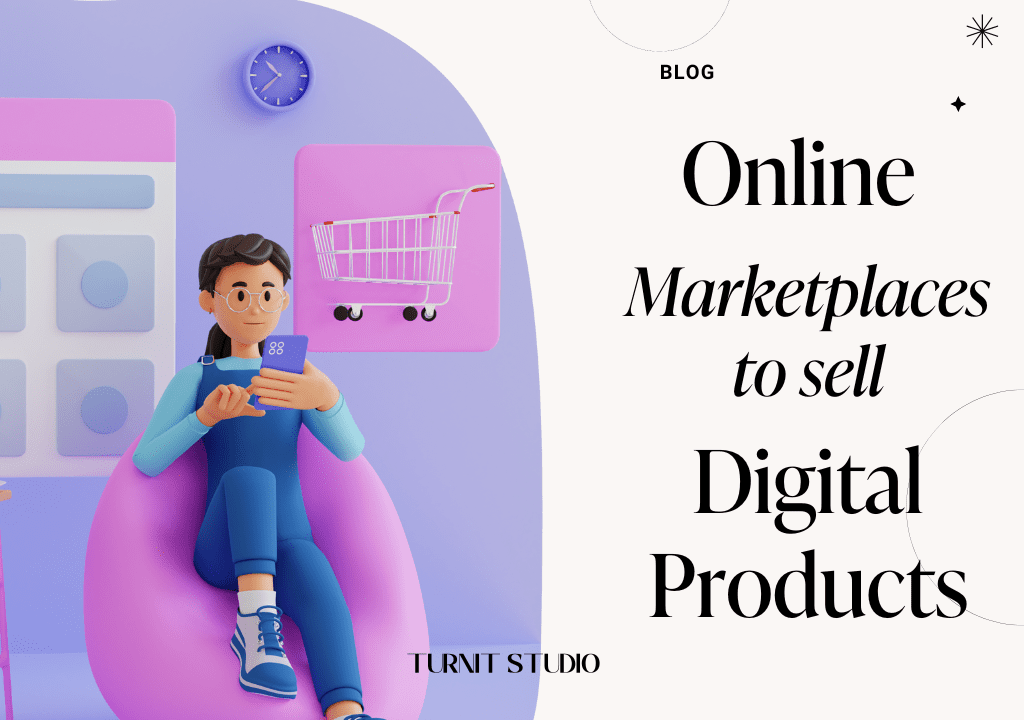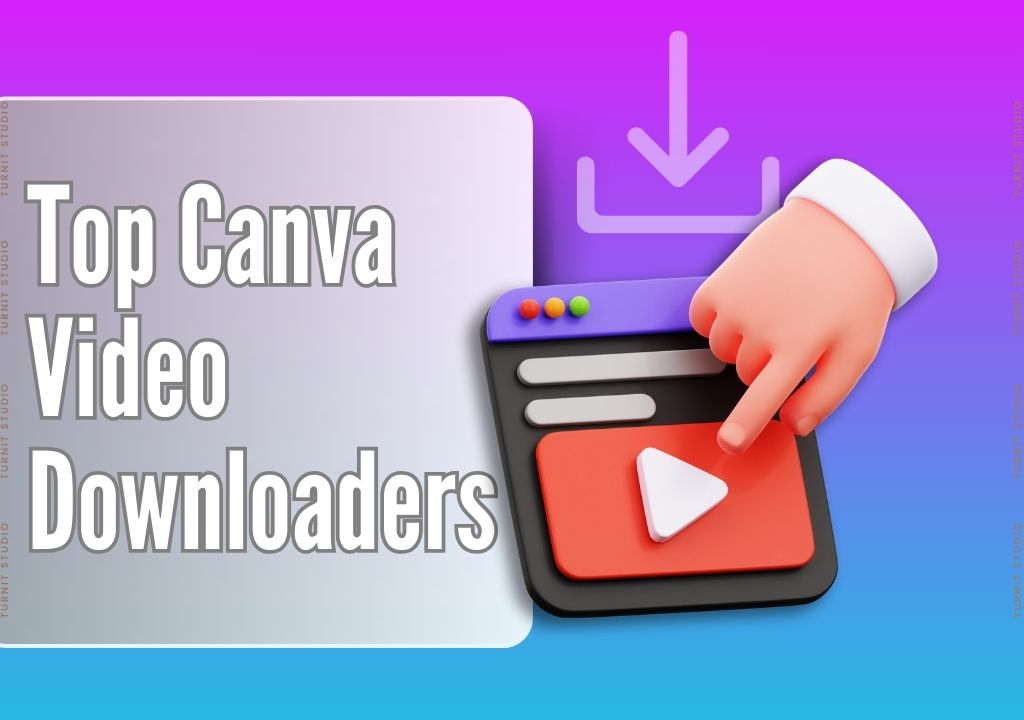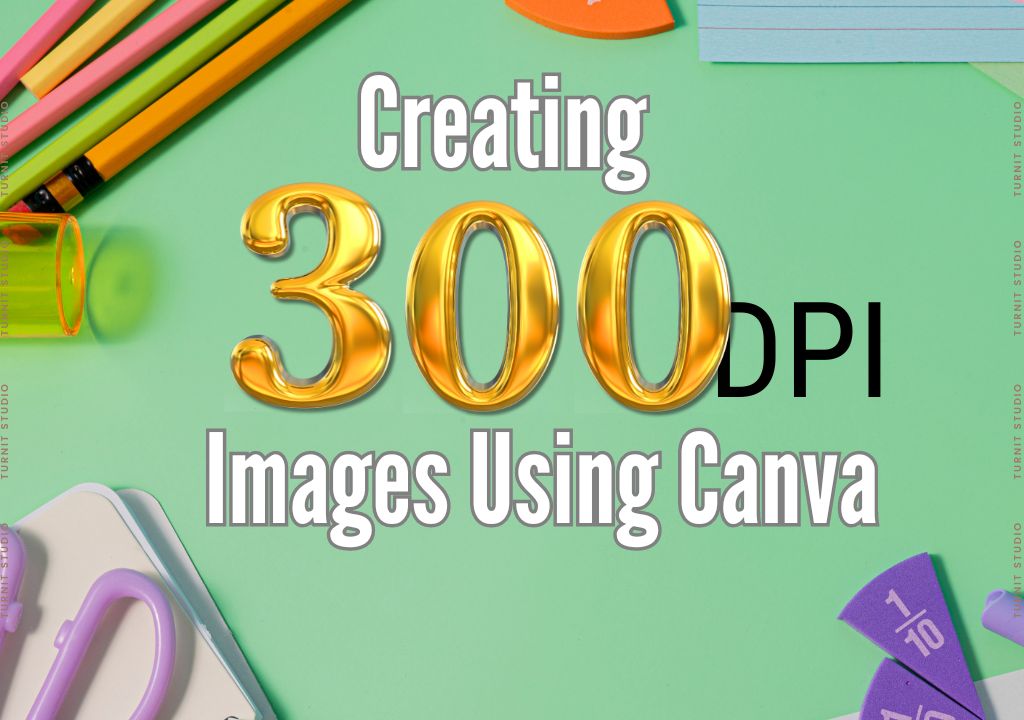Blog
Where to Sell Your Digital Products for Maximum Profit

If you are considering launching a business selling digital products, online marketplaces offer the ideal foundation. These platforms provide expansive access to a diverse customer base, enabling you to maximize your profits from digital products. They are particularly well-suited for selling a variety of digital goods such as ebooks, Canva templates, and many more.
In this article, we will go through the best platforms to sell your digital products and provide you with the insights you need to make informed decisions and boost your revenue.
From well-established marketplaces to niche platforms targeting specific audiences, we’ll delve into the pros and cons of each platform and share tips on optimizing your product listings and leveraging social media to drive traffic to your online store.
IN THIS ARTICLE
Benefits of selling digital products on online marketplaces
Selling your digital products on online marketplaces comes with a lot of benefits. Firstly, these platforms provide you with instant access to a large customer base. Marketplaces like Amazon and eBay have millions of active users, giving you the opportunity to reach a wider audience than you would on your own website.
Secondly, online marketplaces offer a seamless and user-friendly shopping experience for customers. They provide secure payment processing, customer reviews, and a trusted reputation, which in turn increases the credibility of your digital products.
Furthermore, these marketplaces often handle the technical aspects of selling digital products, such as file hosting and delivery. This allows you to focus on creating high-quality content.
Online marketplaces often have built-in marketing tools and features to help promote your digital products. They may offer promotional opportunities, such as discounted pricing or featured placements, which can significantly boost your sales and visibility.
Overall, selling your digital products on online marketplaces can save you time, money, and effort while providing you with access to a large customer base and additional marketing opportunities.

Popular online marketplaces for digital products
When it comes to selling digital products online, there are several popular marketplaces to choose from. Each platform has its own unique features, target audience, and pricing structure. Let’s explore some of the top online marketplaces for selling digital products:
- Amazon Kindle Direct Publishing (KDP): Amazon KDP is one of the largest and most well-known marketplaces for selling e-books. With millions of Kindle users worldwide, this platform offers great potential for reaching a wide audience. KDP allows you to self-publish your e-books and set your own pricing. They also offer promotional opportunities like Kindle Countdown Deals and Kindle Unlimited, which can help increase your book’s exposure.
- Etsy: While primarily known for handmade and vintage products, Etsy also has a dedicated section for selling digital products. This marketplace is ideal for artists, graphic designers, and crafters who create printable artwork, digital templates, or digital downloads. Etsy provides a creative and visually appealing platform with built-in marketing tools, such as social media integration and personalized recommendations.
- Udemy: If you’re looking to sell online courses, Udemy is a popular platform to consider. With over 30 million students and thousands of courses available, Udemy provides a ready-made audience for your educational content. They handle the hosting, marketing, and payment processing, allowing you to focus on creating high-quality courses. However, keep in mind that Udemy takes a percentage of your course sales, so pricing strategies should be carefully considered.
- Gumroad: Gumroad is a versatile platform that allows creators to sell a wide range of digital products, including e-books, music, videos, software, and more. It is known for its simplicity and ease of use. Gumroad provides customizable product pages, secure payment processing, and the ability to offer discounts or bundles. They also offer integration with popular email marketing tools, making it easier to build and engage with your audience.
- Envato Market: Envato Market is a collection of digital marketplaces that cater to various creative industries, including graphic design, web development, and video production. It consists of platforms like ThemeForest, GraphicRiver, and VideoHive, where you can sell digital assets like website templates, graphics, and video templates. Envato Market offers a large customer base and exposure to a niche audience of professionals in the creative industry.
These are just a few examples of the many online marketplaces available for selling digital products. When choosing a platform, consider factors such as your target audience, the type of digital products you offer, pricing structure, and the level of marketing support provided.

How to choose the right online marketplace for your digital products
Choosing the right online marketplace for your digital products is crucial to your success. Here are some factors to consider when making your decision:
- Target audience: Identify the platform that caters to your target audience. For example, if you’re selling e-books, platforms like Amazon KDP or Barnes & Noble Nook Press may be more suitable, as they have a large user base of avid readers.
- Type of digital products: Consider the type of digital products you offer. Some marketplaces specialize in specific types of products, such as e-books, online courses, planners, or graphic design assets. Choose a platform that aligns with your product offerings.
- Pricing structure: Evaluate the pricing structure of each marketplace. Some platforms charge a listing fee, while others take a percentage of your sales. It’s important to understand the costs involved and how they will impact your profitability.
- Marketing support: Look for marketplaces that offer marketing support and promotional opportunities. Features like featured placements, discounts, or advertising options can significantly boost your product’s visibility and sales.
- User experience: Consider the user experience of each platform. Look for marketplaces that provide a seamless and intuitive shopping experience for customers. Easy navigation, secure payment processing, and customer reviews are all important aspects to consider.
By carefully considering these factors, you can choose the right online marketplace that aligns with your goals, target audience, and product offerings.
Optimizing your product listings for maximum visibility and sales
Once you’ve chosen the online marketplace that best suits your needs, the next step is to set up your seller account. The process may vary slightly depending on the platform. When your product listings are live on the online marketplace, it’s important to optimize them for maximum visibility and sales. Here are some tips to help you optimize your listings:
- Use compelling titles: Craft attention-grabbing titles that accurately describe your digital products and entice potential customers to click on your listings. Include relevant keywords to improve search visibility.
- Write compelling descriptions: Create detailed and persuasive descriptions that highlight the unique features and benefits of your digital products. Use bullet points, headings, and formatting to make the information easy to read and digest.
- Include high-quality images: Use high-resolution images that showcase your digital products in the best possible light. Images can greatly impact a customer’s purchasing decision, so make sure they accurately represent your products.
- Optimize for search: Research relevant keywords and incorporate them into your product descriptions and titles. This will improve your visibility in search results and help potential customers find your products easily.
- Provide clear pricing information: Clearly display the pricing information for your digital products. Avoid any hidden fees or surprises that may deter potential customers from making a purchase.
- Highlight customer reviews and ratings: If your digital products have received positive customer reviews or ratings, showcase them prominently on your listings. This social proof can help build trust and credibility with potential customers.
- Offer additional value: Consider offering additional value to customers, such as free bonus materials or exclusive access to related content. This can make your digital products more appealing and increase their perceived value.
Marketing and promoting your digital products on online marketplaces
While online marketplaces provide a built-in customer base, it’s still important to actively market and promote your digital products to maximize your sales. Here are some strategies to consider:
- Leverage social media: Utilize social media platforms like Facebook, Instagram, and Twitter to promote your digital products. Share compelling content, engage with your audience, and run targeted advertising campaigns to reach potential customers.
- Create engaging content: Develop valuable and informative content that is related to your digital products. This could include blog articles, videos, podcasts, or infographics. Share this content on your website and social media platforms to attract and engage potential customers.
- Offer discounts and promotions: Run limited-time discounts or promotions on your digital products to create a sense of urgency and encourage potential customers to make a purchase. This can also help generate buzz and word-of-mouth marketing.
- Participate in online communities: Join relevant online communities, forums, or groups where your target audience hangs out. Provide valuable insights, answer questions, and subtly promote your digital products when appropriate.
- Email marketing: Build an email list of interested customers and regularly communicate with them through newsletters or targeted email campaigns. Provide exclusive discounts, updates, or free content to keep them engaged and encourage repeat purchases.
- Monitor and analyze your marketing efforts: Track the performance of your marketing efforts using tools like Google Analytics or the marketplace’s built-in analytics. Monitor key metrics such as website traffic, conversion rates, and customer engagement to identify what is working and what needs improvement.

Managing customer reviews and feedback on online marketplaces
Customer reviews and feedback play a crucial role in the success of your digital products on online marketplaces. Positive reviews can build trust, increase credibility, and encourage potential customers to make a purchase. Here are some tips for effectively managing customer reviews:
- Encourage reviews: Prompt satisfied customers to leave reviews by sending follow-up emails or providing incentives, such as discounts or freebies. The more positive reviews you have, the better your product’s overall rating and visibility.
- Respond to reviews: Take the time to respond to both positive and negative reviews. Thank customers for their positive feedback and address any concerns or issues raised in negative reviews. This shows that you value customer feedback and are committed to providing a quality product.
- Learn from feedback: Use customer feedback as an opportunity to improve your digital products. Take note of recurring themes or suggestions and consider incorporating them into future updates or releases.
- Monitor for fake reviews: Keep an eye out for fake or fraudulent reviews. Report any suspicious activity to the marketplace’s support team and provide evidence if possible. Most marketplaces have strict guidelines against fake reviews and take action to maintain their integrity.
- Use reviews for marketing: Highlight positive customer reviews in your marketing materials, such as on your website, social media platforms, or product listings. This can help build trust and credibility with potential customers.

Pricing strategies for selling digital products on online marketplaces
Choosing the right pricing strategy is essential for maximizing your profits when selling digital products on online marketplaces. Here are some pricing strategies to consider:
- Competitive pricing: Research your competitors’ pricing and set your prices accordingly. If your digital products are similar to others on the marketplace, you may need to competitively price them to attract customers. However, be cautious of undercutting your value and profitability.
- Value-based pricing: Determine the value your digital products provide to customers and price them accordingly. Consider factors such as the uniqueness of your products, the quality of content, and the perceived value to customers.
- Bundle pricing: Bundle multiple digital products together and offer them at a discounted price. This can encourage customers to purchase more items, increase the average order value, and provide additional value to customers.
- Limited-time promotions: Run limited-time promotions or discounts on your digital products to create a sense of urgency and encourage customers to make a purchase. This can help boost sales and generate buzz around your products.
- Tiered pricing: Offer different pricing tiers for your digital products, each with varying levels of features or access. This allows customers to choose the option that best suits their needs and budget.
- Subscription pricing: If applicable, consider offering subscription-based pricing for your digital products. This can provide a recurring revenue stream and incentivize customers to continue using and paying for your products over time.
- Test and analyze: Experiment with different pricing strategies and monitor their impact on sales and profitability. Use A/B testing or trial periods to gather data and make data-driven decisions about your pricing.
Remember, pricing is not set in stone and can be adjusted over time based on market demand, customer feedback, and your business goals. Regularly review and refine your pricing strategies to ensure they align with your target audience and maximize your profits.
Legal considerations when using PLR products
While PLR products offer many benefits, it’s important to be aware of the legal considerations associated with using them. Here are some important points to keep in mind:
- Read and understand the licensing terms
Before purchasing or using PLR products, carefully read and understand the licensing terms. Each PLR provider may have different terms and restrictions. Make sure you comply with the terms to avoid any legal issues.
- Modify and customize the content
To avoid duplicate content penalties and copyright infringement, always modify and customize the PLR content. Add your own unique insights, examples, and personal experiences to make the content your own.
- Use proper attribution when required
Some PLR products may require you to provide attribution to the original creator. If this is the case, make sure to include the appropriate attribution wherever the content is used.
- Consult with legal professionals if necessary
If you have any concerns or questions regarding the legal aspects of using PLR products, it’s always a good idea to consult with legal professionals. They can provide guidance and ensure that you are using PLR products in compliance with copyright laws.
Conclusion
Online marketplaces offer a powerful platform for selling your digital products and maximizing your profits. With a wide reach, built-in customer base, and various marketing opportunities, these marketplaces provide a valuable opportunity for entrepreneurs and creators.
By carefully choosing the right online marketplace for your digital products, optimizing your product listings, and implementing effective marketing strategies, you can unlock the true potential of online marketplaces.
Remember to actively manage customer reviews and feedback, analyze your pricing strategies, and continuously refine your approach to ensure long-term success.












